Are there any aromas more delicious than those that come from a piece of meat slowly simmering in the oven for hours? Here we offer you 4 large pieces of meat to order and cook this fall in order to perfume your home with comforting scents and satisfy the appetite of the whole family.
Besides being delicious, buying and cooking large cuts of meat has many practical and economical advantages. In fact, this allows:
1. Money Saving:
One of the main benefits of buying large cuts of meat is saving money. Large cuts of meat are often less expensive per pound or per kilo than smaller cuts. This means you can get more meat for your money, which is ideal if you have a large family or want to prepare meals for several days.
2. Culinary versatility:
Large cuts of meat are incredibly versatile in the kitchen. You can use them to prepare a variety of dishes, from roasts to stews to grills. This versatility allows you to vary your menu while using the same cut of meat, which is practical for meal planning.
3. Less preparation time:
Buying large cuts of meat can also save you time in the kitchen. You don't need to cut and prepare several individual pieces, reducing the time spent on preparation. Simply prepare the large piece of meat once and then cook it as needed.
4. Less waste:
When you buy larger cuts of meat, you generally have less waste to deal with. Smaller cuts of meat often leave bones and scraps behind, while a larger cut of meat usually has fewer unusable scraps. This reduces food waste, which is both economical and environmentally friendly.
5. Preparing for the future:
When you buy a large cut of meat, you can prepare some of it for the future. For example, you can cut meat into individual portions, freeze them and take them out as you need them. This allows you to always have meat on hand to quickly prepare meals.
6. Meal for a Crowd:
If you plan to entertain guests or cook a large meal for the whole family, a large cut of meat is a wise choice. It can feed a large group of people, which is convenient and economical compared to purchasing several smaller cuts of meat.
Here are 4 large cuts of meat to try this fall for your meals!
Tied pork shoulder roast
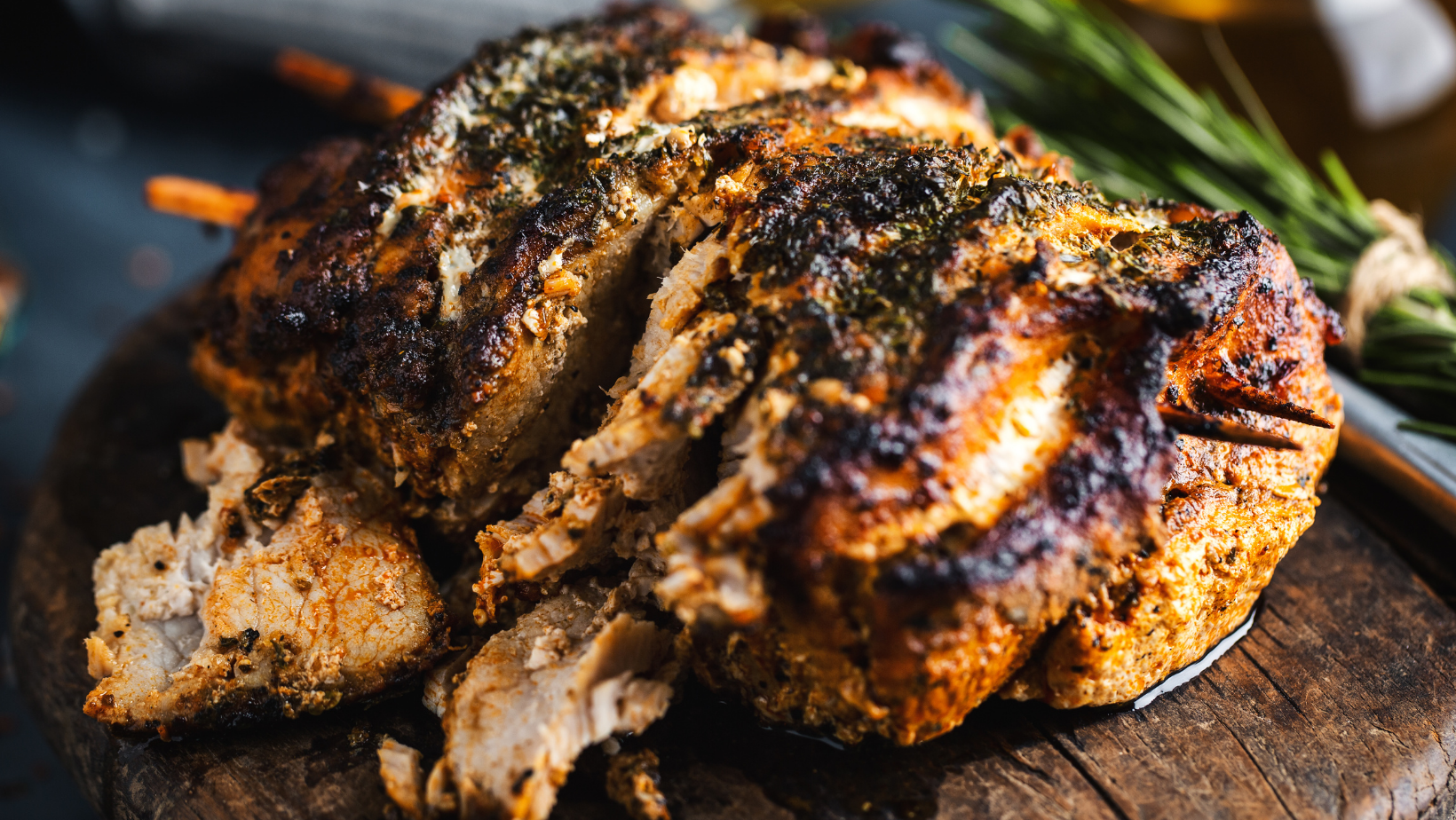
Our tied shoulder roast comes from the Rang 4 farm. This raises the pigs on a grain diet, without the addition of antibiotics or growth hormones.
Ingredients
- 1 tied pork shoulder roast (1.81 kg)
- Salt and pepper to taste
- 3-4 cloves of garlic, minced
- Fresh aromatic herbs (thyme, rosemary, sage)
- Olive oil
- Chicken or vegetable broth
Instructions
- Remove the pork shoulder from the refrigerator about 30 minutes before cooking so that it reaches room temperature.
- Preheat oven to 320 °F (160°C).
- Generously rub the pork shoulder roast with salt and pepper on all sides. Make sure to massage the spices so they penetrate the meat.
- Insert thin slices of garlic into incisions made in the roast.
- Brush the roast with olive oil to help form a golden crust.
- Place the roast in a large casserole dish or baking dish. Add fresh aromatic herbs around the roast, such as thyme, rosemary and sage.
- Pour about 1 to 2 cups of chicken or vegetable broth into the bottom of the casserole dish.
- Cover the casserole dish with a tight-fitting lid or foil.
- Bake the roast in the preheated oven for approximately 3 to 3.5 hours.
- While cooking, check occasionally to make sure the liquid has not completely evaporated. If necessary, add a little more broth.
- Use a meat thermometer to check the internal temperature of the roast. For medium-rare meat, it should reach around 70-75°C.
- Once the temperature is reached, remove the roast from the oven and let it rest for about 15 minutes before carving. This will allow the juices to redistribute into the meat.
- Slice the roast into thin slices and serve with the cooked herbs and cooking juices as a sauce.
Ideas for preparing it
-
Apple Sauce: Serve the roast with a delicious apple sauce with cinnamon and brown sugar for a touch of sweetness.
-
Honey Mustard: Mix Dijon mustard, honey, and balsamic vinegar to create a sweet and tangy sauce that pairs perfectly with pork.
-
Braised Cabbage: Serve pork shoulder roast with bacon-braised cabbage for a classic combination.
-
Roasted Vegetables: Serve with roasted vegetables like carrots, potatoes and onions for a complete meal.
Roast beef
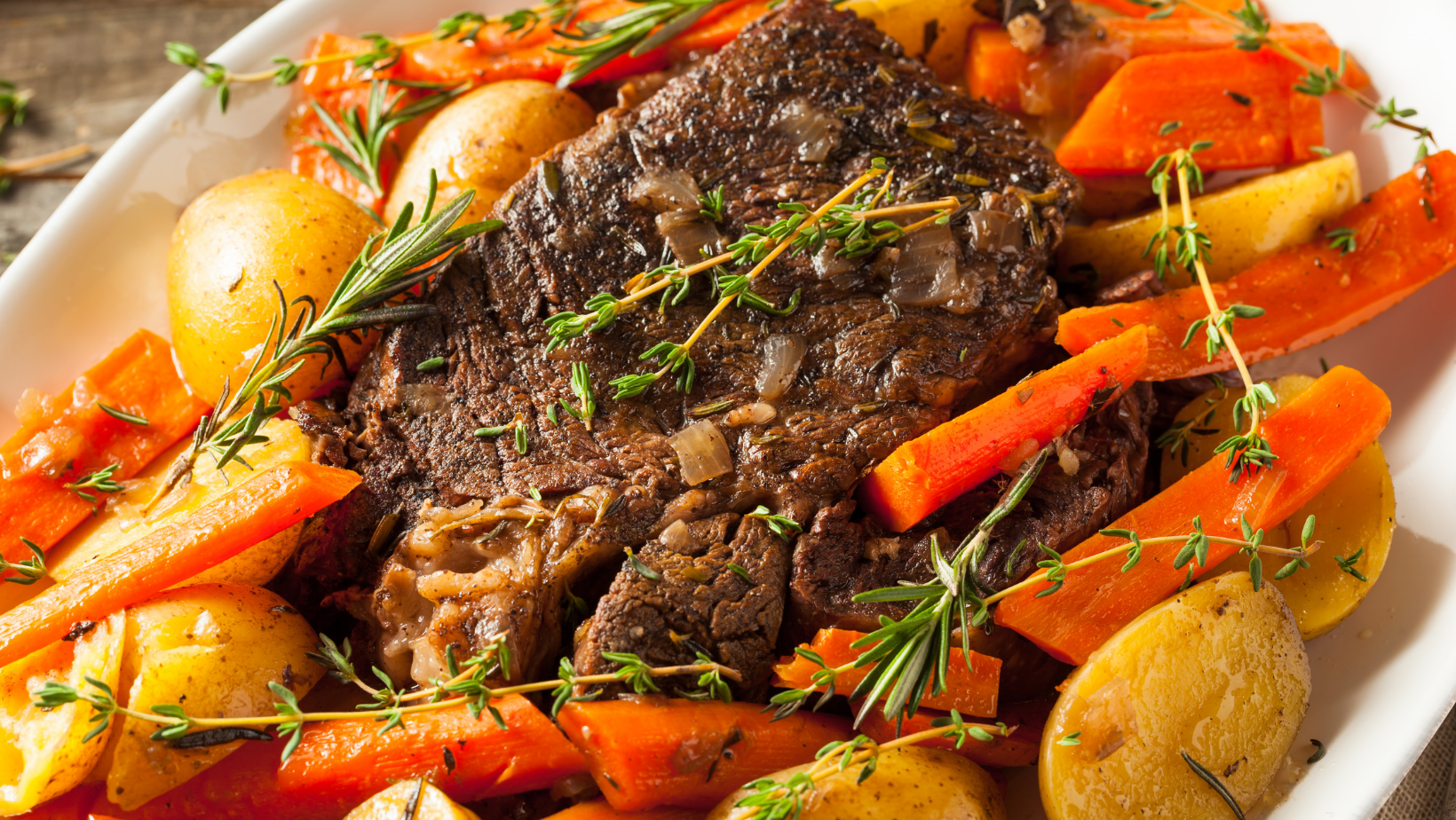
Roast beef is a timeless classic. Our beef is grass-fed, meaning it has spent its life grazing on grass in a pasture. In addition, the Anjou et fils farm raises high quality beef, without using antibiotics or hormones. So here's how to cook a boneless short rib roast.
Ingredients
- 1 boneless grass-fed beef cross rib roast (908g)
- Salt and pepper, to taste
- Fresh aromatic herbs (thyme, rosemary, savory, for example)
- Olive oil
Instructions
- Start by removing the roast from the refrigerator about 30 minutes before cooking so that it reaches room temperature.
- Preheat oven to 350 °F (180°C).
- Season the cross rib roast generously with salt and pepper.
- Finely chop your fresh aromatic herbs, such as thyme, rosemary and savory. Toss with olive oil to create a fragrant marinade.
- Brush the roast with the aromatic herb marinade.
- Place the boneless short rib roast in a baking dish.
- Place the roast in the preheated oven and cook for approximately 25 to 30 minutes per pound of meat. Use a meat thermometer to check the internal temperature. For medium-rare meat, aim for a temperature of 60-65°C, but remember that the temperature continues to rise slightly during rest.
- When finished cooking, remove the roast from the oven and cover with foil. Let sit for 15 to 20 minutes to allow the juices to redistribute inside the meat.
Ideas for preparing it
-
Red Wine Sauce: Serve the roast with a delicious red wine sauce made from the cooking juices, red wine, shallots, mushrooms and herbs. Reduce the sauce until it thickens and serve it as a side dish.
-
Herb Crustaceans: Before cooking the roast, spread a crust of herbs mixed with breadcrumbs on top for a crunchy and fragrant texture.
-
Roasted Vegetables: Serve roast with roasted vegetables like potatoes, carrots and onions for a complete meal.
-
Fresh salad: Serve the sliced roast on a bed of green salad with a light vinaigrette for a light, summery meal.
Leg of lamb
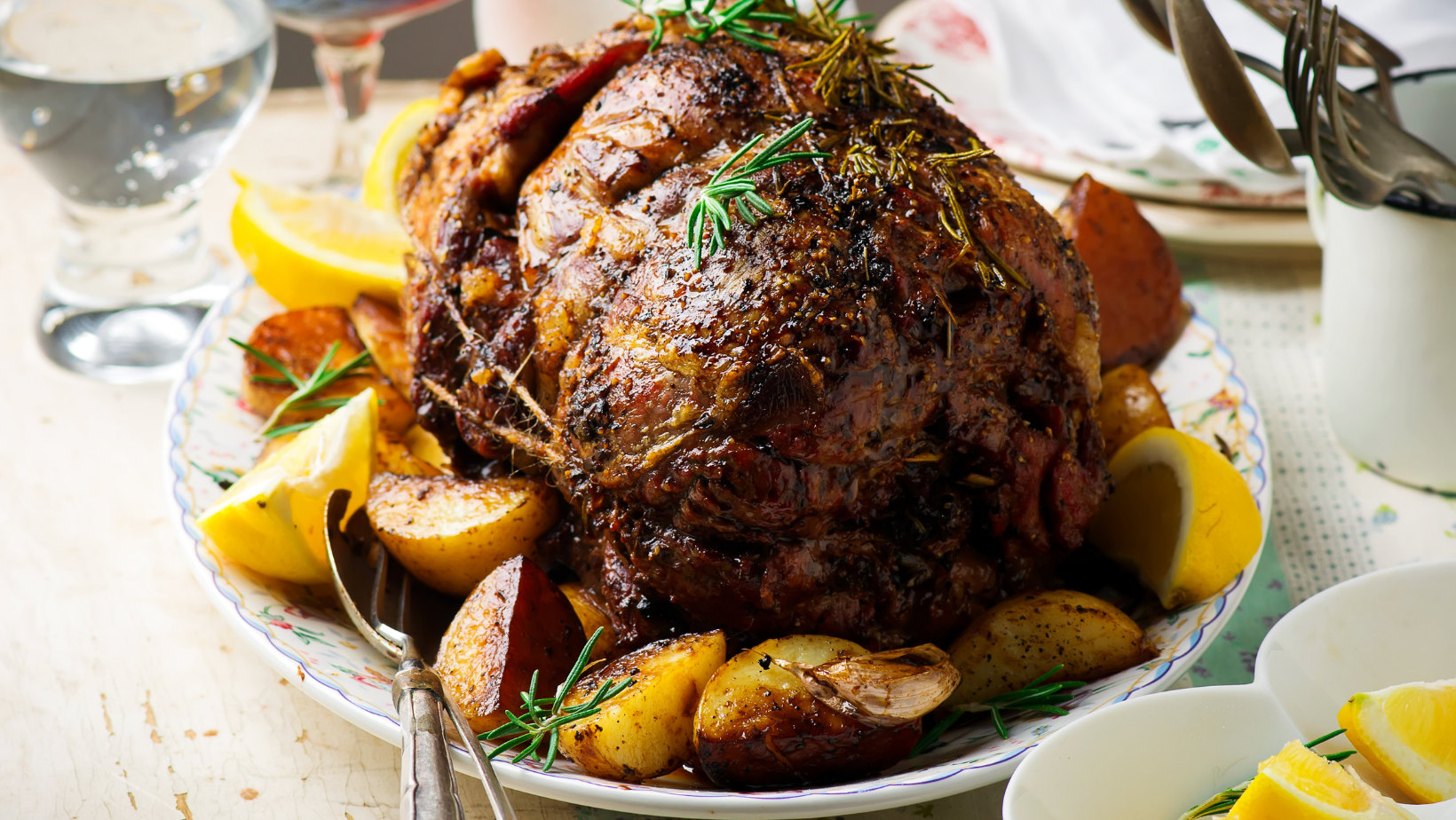
Cooking a leg of lamb can seem intimidating, but with the right method and a few tips, you can prepare a delicious dish that will impress your family!
Ingredients
- 1 semi-boned leg of lamb (3kg)
- 4 cloves of garlic, cut into thin strips
- 2 sprigs of fresh rosemary
- 2 tablespoons of olive oil
- Salt and freshly ground black pepper
- 250 ml of chicken stock or white wine (for cooking)
Instructions
- Remove the leg of lamb from the refrigerator about 30 minutes before cooking so that it reaches room temperature.
- Preheat oven to 420 °F (220°C)
- Cut the flesh of the leg using a sharp knife and insert slices of garlic and small sprigs of rosemary.
- Brush the leg of lamb with olive oil and sprinkle generously with salt and pepper.
- Place the leg of lamb in a baking dish.
- Pour the chicken stock or white wine into the bottom of the dish.
- Place the leg of lamb in the preheated oven and cook for 15 minutes at 420 °F to sear the meat well. This will give a nice golden color to the exterior.
- After the first 15 minutes, reduce the oven temperature to 35 0 °F ( 180°C).
- Continue cooking for approximately 20 to 25 minutes per pound of meat for medium doneness. Use a meat thermometer to obtain the desired doneness: 60-65°C for “rare”.
- Remove the lamb from the oven and wrap it in aluminum foil. Let sit for at least 15 to 20 minutes. During this time, the meat will continue to cook lightly and the juices will distribute evenly.
Ideas for preparing it
Once your leg of lamb is cooked to perfection, you can serve it with different toppings and sauces, depending on your preferences:
-
Mint sauce: Prepare a fresh mint sauce to accompany your leg of lamb. Mix chopped mint, Greek yogurt, lemon juice, salt and pepper for a light and refreshing sauce.
-
Roasted Potatoes: Roasted potatoes are a great side dish. Cut them into pieces, add olive oil, rosemary, salt and pepper, then bake them in the oven until golden and crispy.
-
Seasonal vegetables: Serve the leg of lamb with roasted seasonal vegetables, such as carrots, zucchini or asparagus, for a balanced meal.
-
Gratin dauphinois: If you're looking for a creamier option, a gratin dauphinois is a great choice. Potato slices cooked in cream sauce, sprinkled with cheese and baked until golden and creamy.
Whole roast chicken 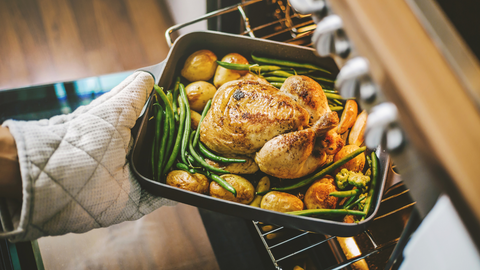
At Ferme des Voltigeurs, the chickens eat 100% vegetable grains, benefit from a larger space to move around, receive no preventative antibiotics and are cooled in air and not in water. Their flesh is tastier, less fatty and loses almost no volume when cooked.
Here is a step-by-step guide on how to cook our whole chicken from Ferme des Voltigeurs as well as ideas for preparing it.
Ingredients
- 1 whole chicken (weight of your choice)*
- Salt and pepper to taste
- Olive oil or melted butter for brushing
*It is possible to choose between a smaller whole chicken, between 1.4 and 1.7kg, or a larger whole chicken, between 1.7 and 2.2kg.
Instructions
- Preheat oven to 430 °F (220°C) for initial cooking at high temperature, then reduce temperature to 350 °F ( 180°C) thereafter.
- Make sure the chicken is clean and dry inside and out. If necessary, remove the giblets and neck from inside the chicken.
- Sprinkle the inside of the chicken with salt and pepper.
- Stuff the chicken with fresh herbs, lemon wedges or garlic for added flavor.
- Tie the chicken wings behind its back to prevent them from burning while cooking.
- Generously brush chicken skin with olive oil or melted butter. Season.
- Place chicken in a large roasting pan or on a rack in a baking dish. Place in preheated oven.
- Cook the chicken at 220°C for approximately 20 to 30 minutes.
- After this first high temperature cooking phase, reduce the oven temperature to 180°C.
- Continue cooking for approximately 20 minutes per pound (450 g) of chicken. Use a meat thermometer to check that the internal temperature of the thigh reaches 75°C to ensure complete cooking.
- Once cooked, remove the chicken from the oven and let it rest for 10 to 15 minutes.
Ideas for preparing roast chicken
-
Sauce with drippings: Use the drippings to make a delicious chicken gravy. Deglaze the roasting pan with chicken stock, white wine or cream for a flavorful sauce.
-
Roasted Vegetables: Place vegetables like carrots, potatoes and onions around the chicken to roast in the drippings. They will be an excellent accompaniment.
-
Spices and Herbs: Season the chicken with spices or herbs of your choice. Thyme, rosemary, paprika or lemon will add a unique touch of flavor.
-
Toppings: Serve the chicken with toppings such as lemon wedges, olives, capers, or slices of crispy bacon to add texture and flavor.
*We also have an organic whole chicken option that comes from Viandes Bio de Charlevoix . Organically raised chickens benefit from grains grown without the use of pesticides, insecticides, chemical fertilizers or GMOs.
With the right cooking techniques and tips, you can create several meals that are both economical and simply delicious! Feel free to experiment with marinades and seasonings to customize these classic dishes to your taste. Enjoy your food !




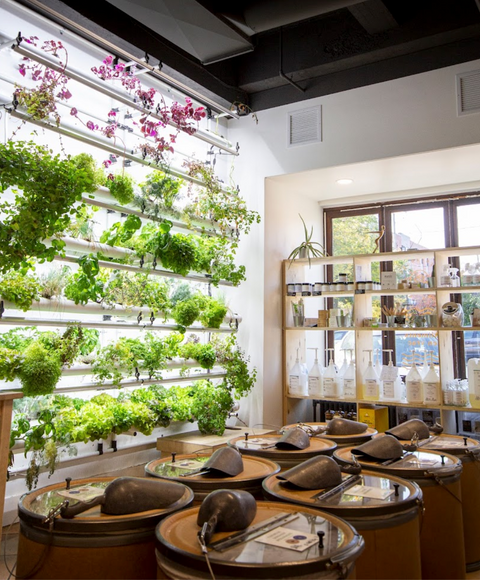
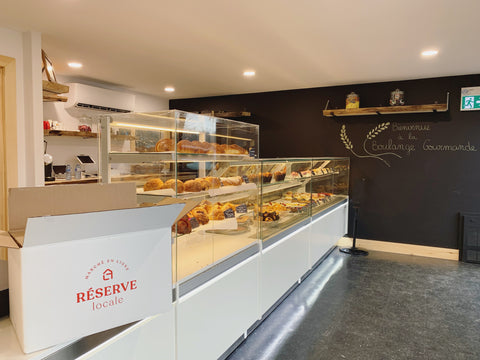
Comments (0)
There are no comments for this article. Be the first to leave a message !